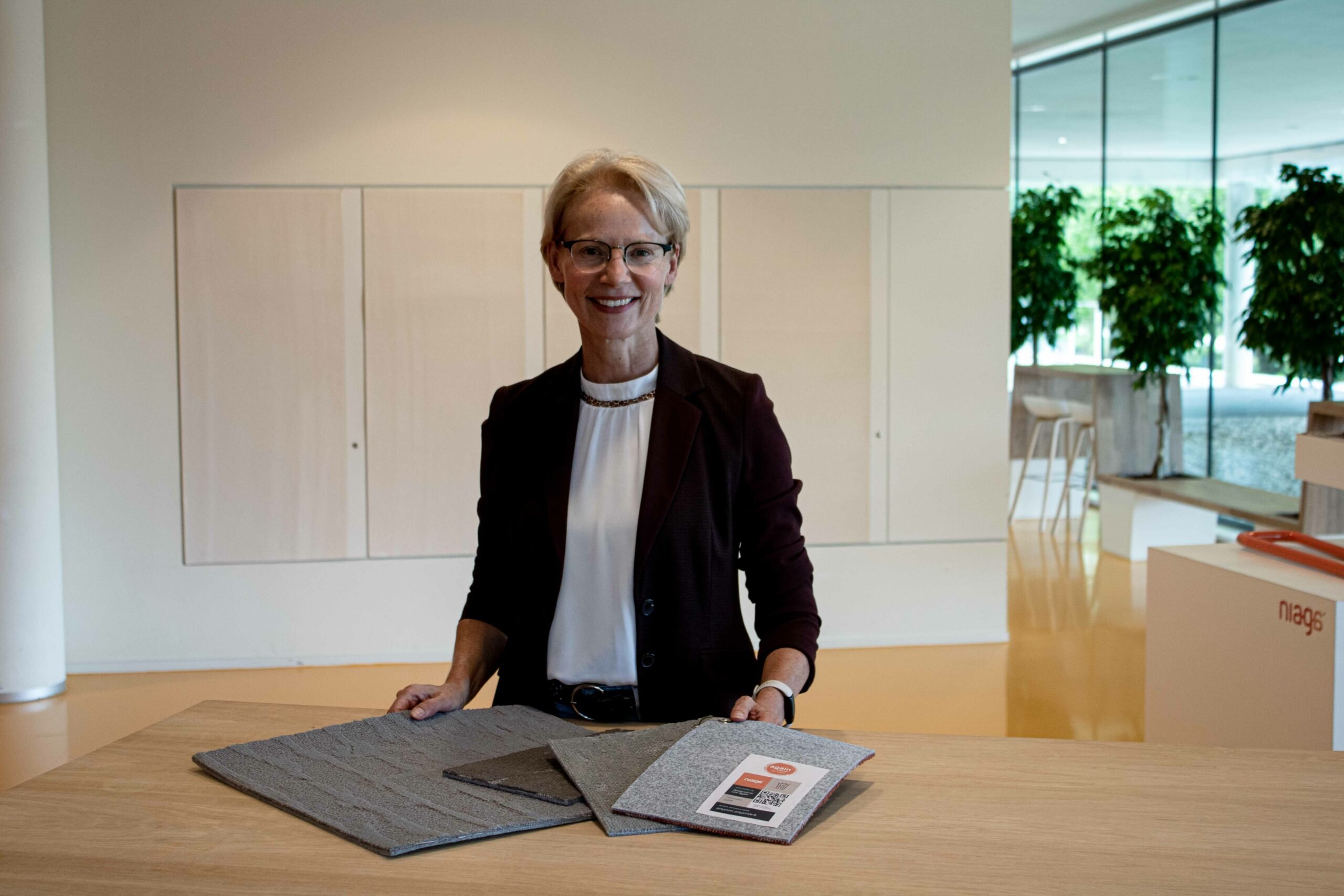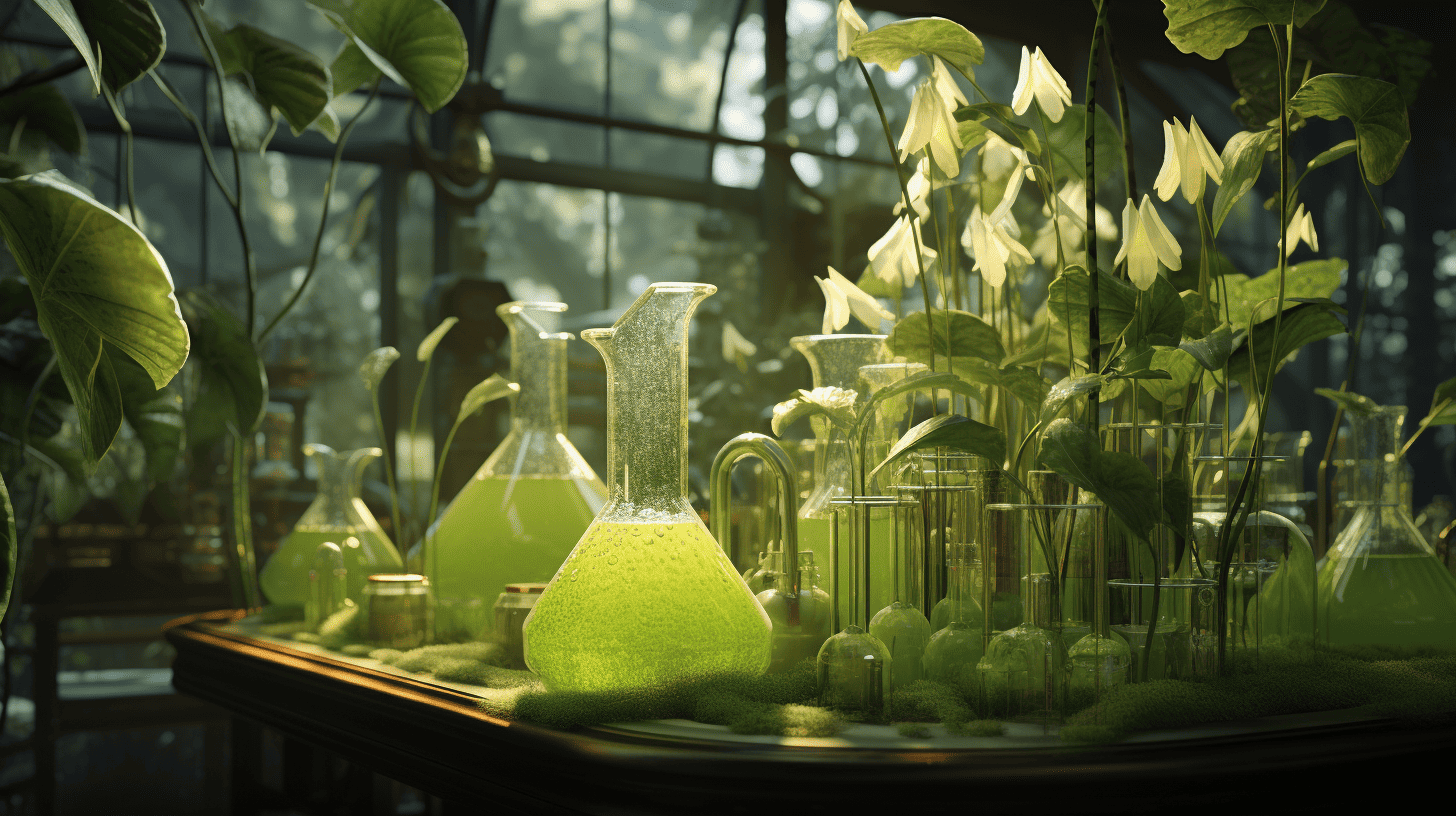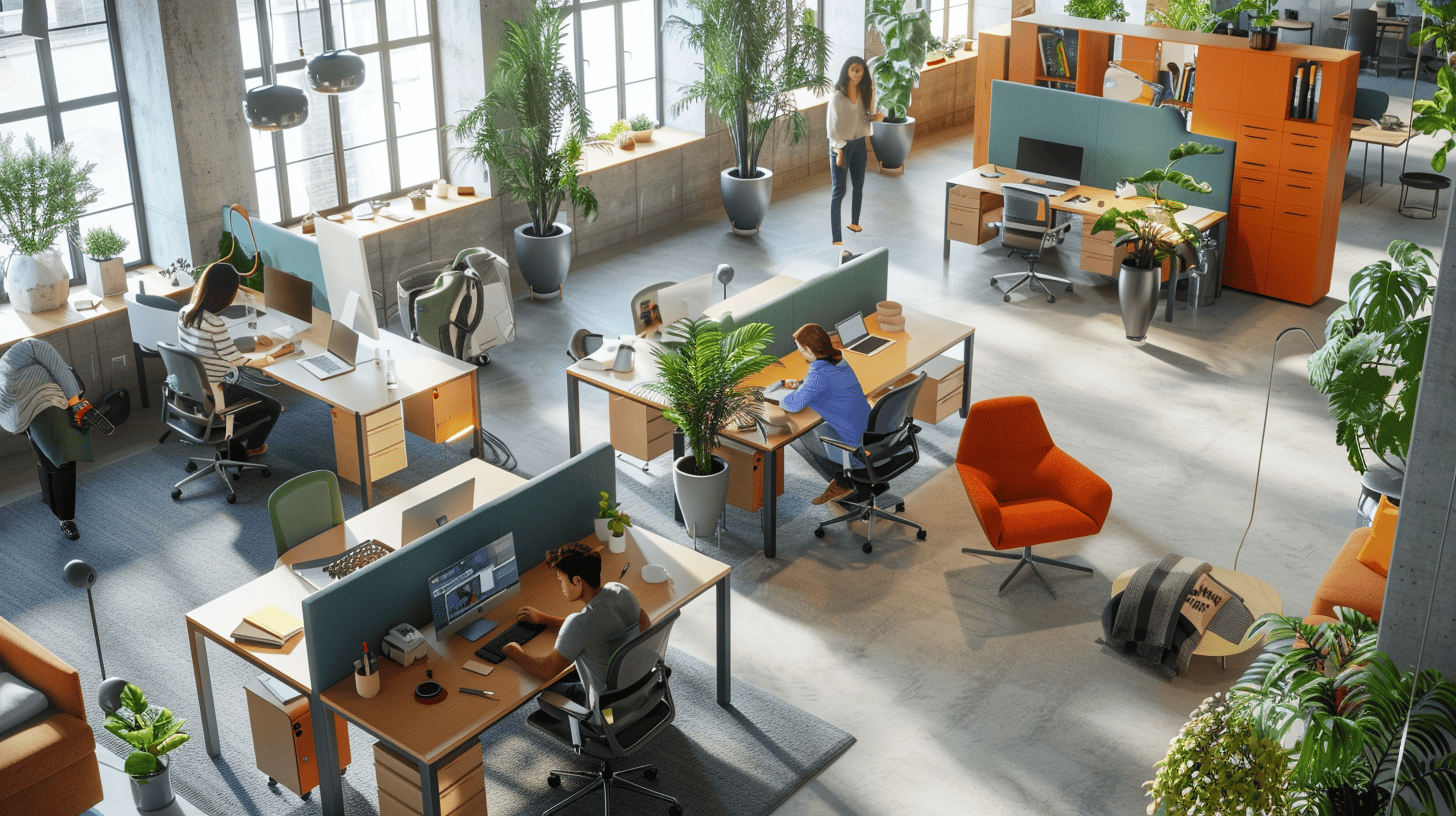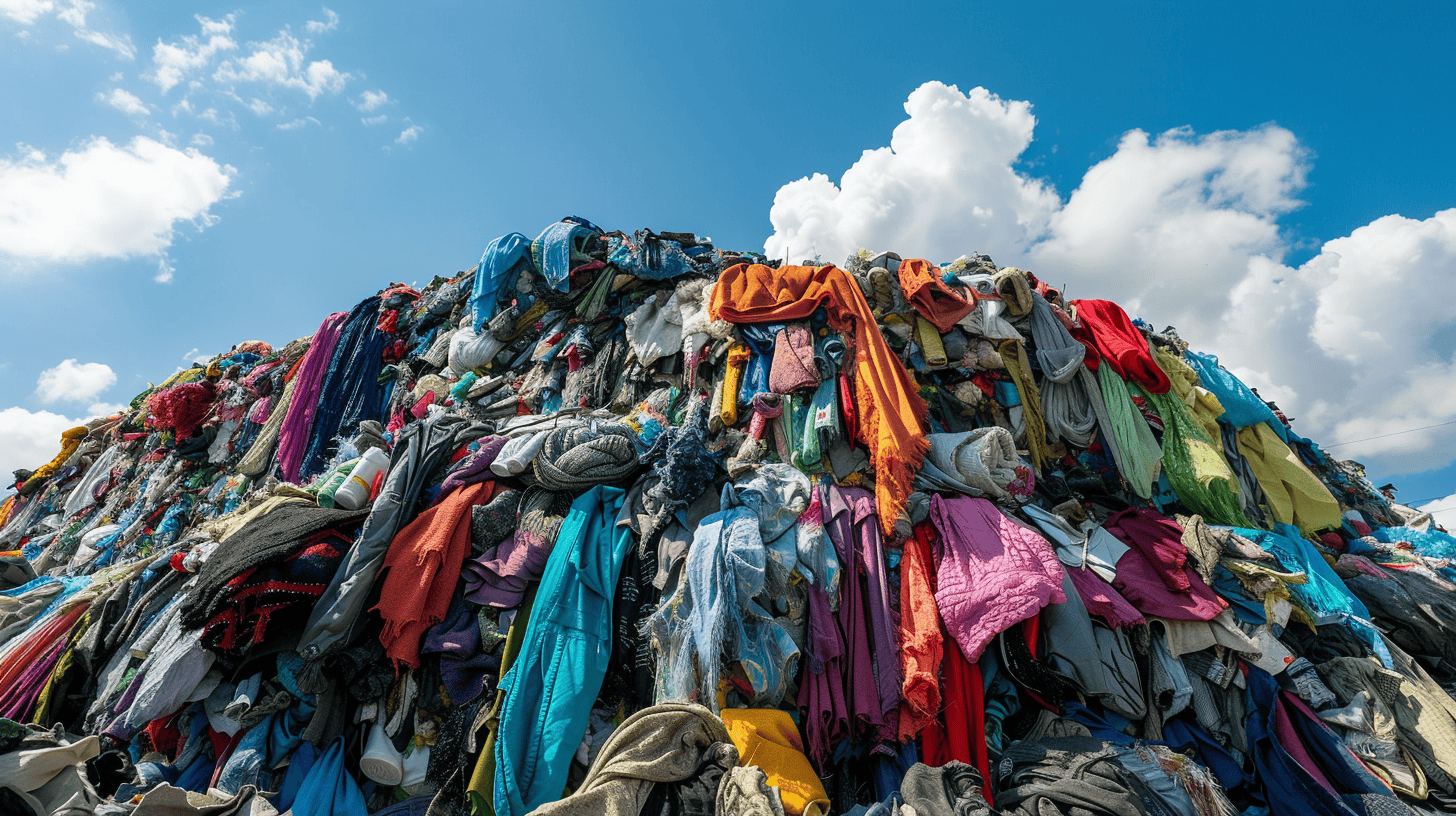
Niaga manufactures almost fully circular carpets, mattresses and panels. “Initially, we are focusing on these products because right now they often end up in landfills or are burned,” says Chantal Jörissen, director of product marketing for panels at Niaga®. “That can be done differently.” The innovative venture falls under the remit of chemical company Covestro, which has become increasingly focused on circularity in recent years.
‘Let’s design out waste. Completely,” is Niaga’s mission. “We redesign products to be reusable, with clean and infinite materials that can be used again and again via recycling. As a consequence, there is almost no waste anymore,” Jörissen states. As such, the company is not necessarily starting with recycled materials, but the designers are enabling products from Niaga to be infinitely recyclable in the future. “We are thinking one step ahead,” she adds.
For example, the carpet is made of two types of materials, one type for the yarns of the top layer and one for the felt carpet underlay. The two layers are stuck together with Niaga’s special “click-unclick polyester adhesive” in a way that also allows them to be separated. This adhesive releases at a high temperature. “Then you have two layers of pure material again, which are very easy to recycle,” says Jörissen. “That’s just not possible with the current production technique that uses latex. You can’t separate those materials from each other anymore, which makes recycling impossible.”
Cutting down on costs
Niaga also uses this special adhesive in mattresses and panels. “The panels are made from cellulose, from trees or from paper or textile pulp. On top of that we attach a HPL, a thin layer that gives it a particular color or look,” Jörissen explains. The panels can then be used as kitchen cabinets or desks, for example. If people tire of a piece of furniture after a number of years, or if it is damaged, then the outer layer can be easily replaced. “For instance, this can really make a difference for housing corporations. Apartments often all have the same kitchen that needs to be replaced every few years. By replacing just the outer layer with this technology, you can save a lot of money and it’s much better for the environment,” she points out.
Retaining value
In summary, Niaga is developing designs based on three principles. The first is: Keep it simple. That is, the company uses as few different materials as possible to make a product. This simplifies recycling. Second, the company uses clean and infinite materials, which means that the materials used must always be safe for people and their environment. In addition, the materials also need to be reusable over and over again without weakening the value of the material. Lastly, Niaga works with reversible connections, which means that all materials that are connected to each other can also be disassembled again, as fixed connections and composite materials make recycling impossible.
These principles form the basis of all Niaga’s products. “This sets us apart from other companies,” Jörissen notes. ” The burning of products is sometimes called thermal recycling or recovery because the heat released during the incineration process can be used again in the production process. That’s not what we mean, because the materials will still be lost.” Waste is also sometimes used in other products such as asphalt or rubber tiles for playgrounds. “The materials may have been used a second time, but they still end up in the trash. We make sure that you are able to reuse materials countless times in a similar type of product. That way the materials retain the same amount of value.”
Different paths
Each product or product group requires a different approach, both in terms of design and business model. “We look at each product to see what the needs of our customers are and where the opportunities lie for us,” she continues. The business model may also change along the way. “Our goal is to help with the transition to a circular economy. In doing that, we do have to follow different paths.”
Production line at Brightlands Chemelot Campus
The mattresses and carpets are now on the market. “We developed the mattresses together with Auping. They contributed their knowledge about mattresses and we used our knowledge about the materials and the technology,” she recalls. “Auping introduced the mattresses to the market, they are available now.” For carpets, Niaga® opted for a completely different direction. Also the carpet is already being used. “In one of the office buildings at the Brightlands Chemelot Campus there is our carpet,” says Jörissen with appropriate pride. “To make a circular carpet, not only do you need a special adhesive, but also another type of machine to manufacture it,” Jörissen explains. ” So, in order to show companies how it works, we set up a pilot plant at the Brightlands Chemelot Campus at the time.”
This is how Niaga® can do the assembly for companies that want to work with the new, circular carpet, but who do not yet want to purchase the machine. “This is an intermediary step to help companies get started. But ultimately companies need to start manufacturing the carpet themselves,” she states. The first carpet manufacturers, including American Mohawk, are already working on this. Jörissen: “We hope that in the near future more products like Mohawk and Auping will start offering our products.”
Read more about Brightlands Chemelot Campus
Special tag

The first circular products redesigned by Niaga® have been launched on the market by these partners. But how do they manage to get the materials back to actually recycle them? These products have been fitted with a Niaga® tag for this purpose. This is a recognizable label with a QR code to a page that states exactly where consumers can return the product when they no longer need it. There is also a detailed description of the materials used in the product. “This is a very important part of the concept we offer. The recycling world is evolving,” she contends.
More and more circular
“That the products that are manufactured according to our principles can be recycled has been proven. Now campanies need to look at how this can also be economically relevant for companies. So, they need to look for ways to make recycling as efficient and cheap as possible,” she goes on to say. Jörissen expects that more and more companies will focus on disassembly, as in, taking products apart. But consumers will eventually have to hand in their products to be recycled, instead of them being thrown out with residual waste. She does not see any problems with that for the time being.
“The expectation is that materials will become scarcer in the future so prices are bound to go up. It could be that in the future you might even get money back if you hand in products with a Niaga® tag, just as is already the case with scrap metal.”
The government is now drafting laws and regulations to accommodate large-scale recycling. “There are already an increasing number of start-ups and also large companies working on circularity, which is really great to see. Once the laws and regulations in this area are completely in place, a lot more companies will follow suit,” she expects. “We are now facing a hurdle that we all have to take. However, I believe that in the future, we really will have far more sustainable and circular products. Niaga® wants to inspire other companies now and in the future where circularity is concerned.”








